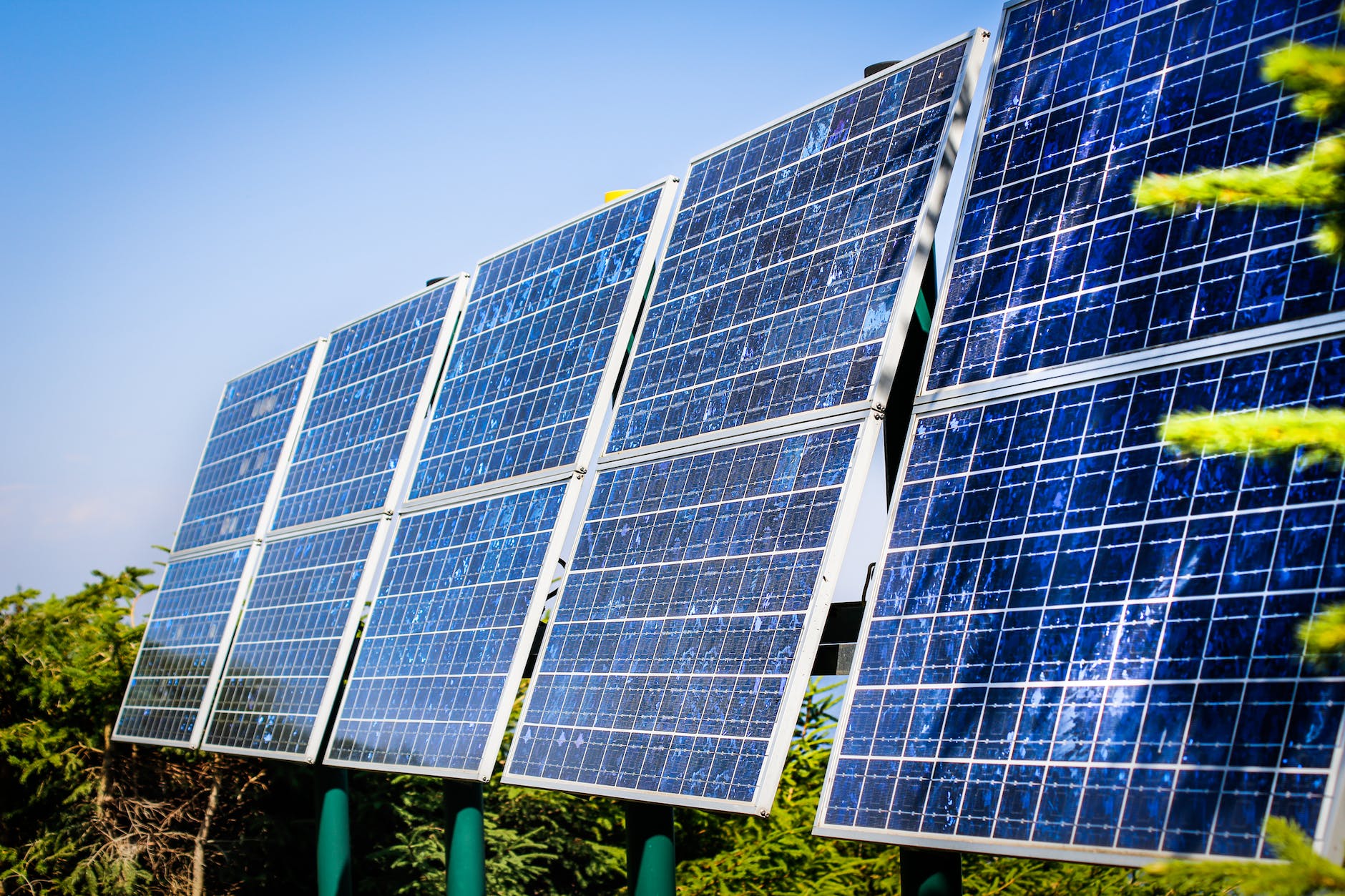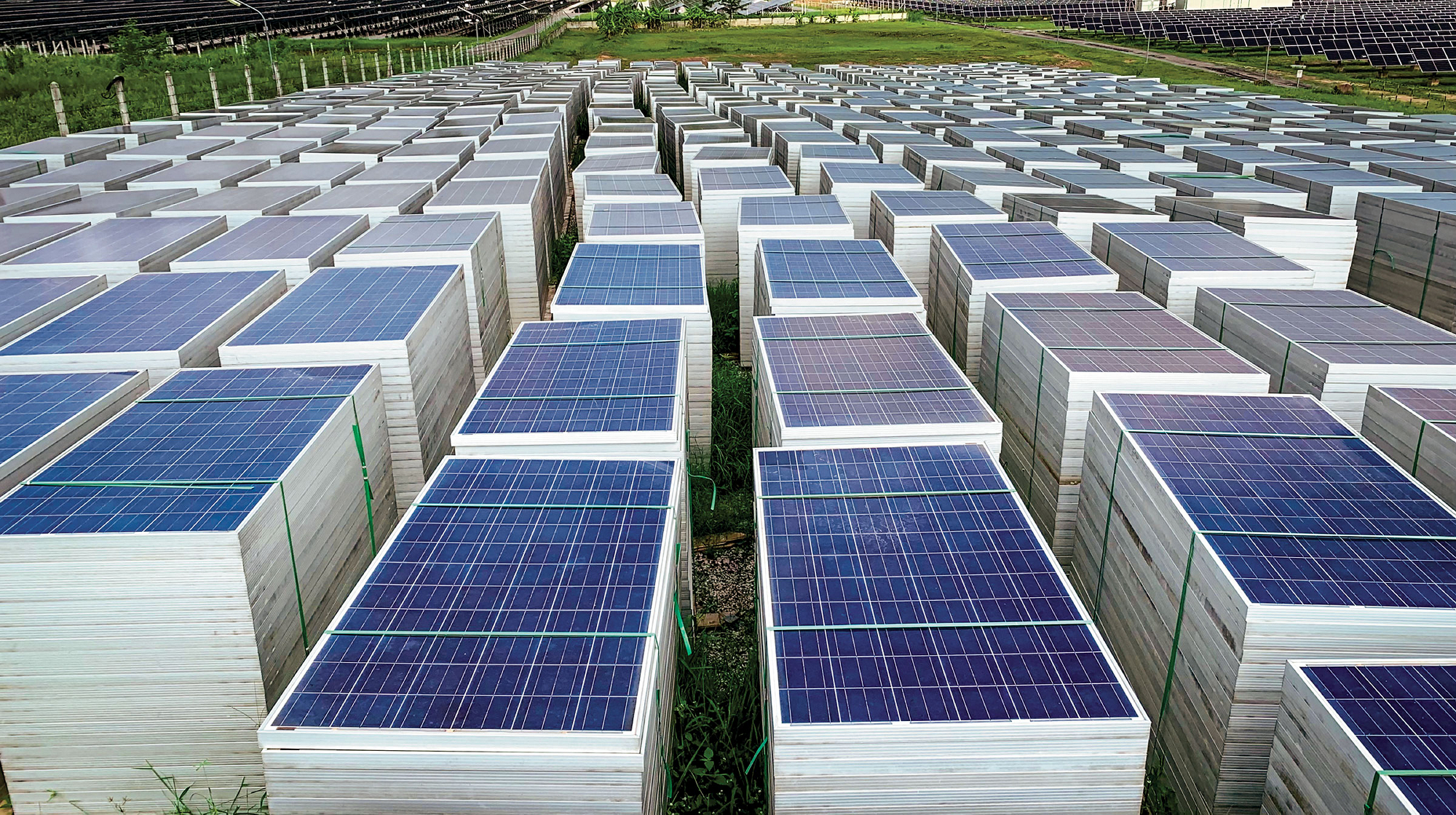Solar energy has now turned into a strong transformative force for industrial projects via cost-effective and sustainable energy, thus powering operations with minimal environmental impact. Electrical energy is generated by solar power through photovoltaic cells, AC, and DC systems, thus catering to large-scale energy requirements across diversified industries. The paper elaborates on how solar energy supports industrial initiatives in various ways with specific examples, quantitative data, and insights for each type of solar technology.

Solar Basics for Industry
In the industrial scenario today, adaptation to solar energy is a lot more than a "go-green" move; it is one for reducing operation costs. To elaborate, energy-intensive industries like auto or food processing can reduce up to 60% of the electricity cost by shifting to solar energy. This not only reduces the financial burden on companies but also reduces dependence on unstable energy grids. That means a manufacturing plant that uses 25 MW annually might save about $500,000 annually, depending on regional solar efficiency, by switching over to solar.
In addition, this investment in solar technologies can yield quantifiable impacts for the company's carbon footprint. One might, for instance, be allowed to allow a 10 MW solar electricity generation system at a plant that is capable of reducing one's CO₂ emissions up to 16,500 tons per year. This is approximately equivalent to taking 3,000 cars off the road each year—a key advantage for companies with sustainability goals.
Types of Solar Energy
Diverse solutions for specific industrial needs are available in various forms of solar energies. The different benefits accruing from PV cells, Concentrated Solar Power (CSP), and hybrid systems ensure that the advantages provided by them can be tapped in a host of industries.
These photovoltaic cells convert it into electrical energy in direct sunlight. Because they are so straightforward to set up and scalable, photovoltaic panels are an increasingly popular industrial application. The efficiency of industrial-grade photovoltaic cells reached as high as 20-30%, meaning higher energy with fewer panels. Such a plant producing beverages can offset around $100,000 annually in electricity costs with a PV panel installation producing 3 MW annually.
This approach works particularly well in industries requiring a constant source of high-temperature heat to refine metals or produce chemicals. While these systems can achieve temperatures greater than 1,000°C, they are a very viable replacement for gas-fired heat exchangers. In one instance, an Arizona metal foundry realized a 12% savings in energy costs during its first year as the result of the installation of a CSP system, while yielding financial and environmental dividends from cleaner heat generation.
Hybrid Solar Systems integrate PV with CSP technology to produce either electricity or thermal energy, or both, within a single integrated system. This duality therefore enhances overall energy efficiency to almost 70% and is extremely useful in those facilities that do indeed require both power and heat, such as paper mills. A paper factory in South Africa, for instance, reduced its energy costs by more than 35% when it commissioned a hybrid system, thereby showing that the marriage of solar technologies at an industrial scale is commercially feasible.
Powering Industrial Sites
Solar energy is a very reliable feedstock. It is important in ensuring that continuous energy supply is given to any industrial site. In this regard, solar energy generation can be used for the purpose of manufacturing, processing, and distributing various products since it continuously produces power suitable for use by both AC and DC power systems.
Solar panels generally generate DC power, which can be converted into AC power with the use of inverters at efficiencies of up to 98%. The implication of this is that nearly all the generated power may be gainfully utilized for industrial purposes. For instance, an assembly plant in the field of electronics may use solar inverters to run its machines and equipment and thus make the maximum use of its installed capacity of 2 MW solar installation with the saving of almost US$200,000 every year.
This makes solar energy even more reliable when integrated into battery storage systems, therefore turning it into an industrially practical source of power 24/7. Tesla's Gigafactory in Nevada fitted out with a 70 MW battery storage system has reduced dependence on the grid by 85%, therefore allowing the facility to work without interruption for days on end. The systems are capable of providing up to 12 hours of backup power—the sure advantage for factories that cannot afford disruptions in power.
Cost Savings Explained
Solar systems have an upfront cost, but payback is quick and profitable. Depending on how much sunlight a region gets and what the local electricity rate is, it generally takes 5-7 years for a large-scale industrial installation costing in the range of $1 million to $3 million to break even. This growing financial dividend is sweetened by solar's plummeting price per kWh, which is as low as $0.05 globally now—considerably less than traditional energy sources.
One of the biggest incentives for industries with regard to solar systems is return on investment. This can be illustrated by the fact that a factory installing a 2 MW solar setup saves US$ 300,000 per year in terms of an electricity bill, translating to savings of US$ 3 million in ten years. This kind of setup is increasingly common among manufacturers that want to offset operating costs and carbon footprints. With incentives added, such as the U.S. federal tax credit for commercial solar systems covering 30% of installation costs, the initial upfront costs for a company may be further reduced, at times by hundreds of thousands of dollars.
Global subsidies and tax incentives further reduce the cost of solar installations. For example, in the European Union, subsidies as high as 50% are allowed on the costs of solar systems. This means factories can reduce their installation costs by half. Such government incentives, in addition to large long-term savings, increase the financial rationale for the application of solar energy.
Environmental Benefits
With increased pressure for sustainability amongst industries, solar power presents perhaps the best solutions. Every megawatt installed saves about 1,650 tons of CO₂ emissions annually. This effect amounts to major environmental benefits for large industrial sites with high energy demand.
In the U.S., industrial solar installations reduced almost 15 million tons of CO₂ emissions in 2022 alone, a quantity equivalent to taking 3 million cars off the road. Companies such as Walmart have implemented solar installations at many of its distribution centers and have reduced carbon emissions by more than 200,000 tons last year. Such a reduction significantly sustains the company's commitment toward sustainability while reducing adverse impacts that its operations have on the environment.
The other important ecological benefit of solar energy is water conservation, mainly in arid areas. While coal and nuclear plants show a huge requirement for water for cooling purposes, the amount of water required to operate solar power is practically nil. A single solar-powered industrial site can save up to 50 million gallons of water annually, a valuable resource-saving measure for industries in drought-prone areas.
Future-Proofing with Solar
Investing in solar technologies means that, besides satisfying today's energy needs, an industry future-proofs its industries against increasingly strict energy regulations. For example, the European Union intends to reach 32% renewable energy by 2030, while many targets have been emerging from all parts of the world. Solar installation for industries helps a company stay ahead of such evolving standards and ensures their compliance with regulations to further cement their commitment toward sustainability.
The industrial solar installations also make them independent of the turbulent energy markets and erratic grid supplies. Solar systems combined with battery storage become self-sufficient micro-grids, thus allowing the factories to operate without relying on any external sources of power. An autonomous microgrid—a German manufacturing site that saves close to US$200,000 in annual energy costs by avoiding price hikes and power outages while ensuring continuous operation.
Other advantages of solar energy are scalability—easily expanded to meet increased energy demands. For instance, this might be a factory that starts with 1 MW of solar power, then adds an additional 500 kW as demand increases. The modular nature of solar allows such systems, in this sense, to grow along with the business and provide a flexible energy solution to fluctuating production levels.
Choosing the Right Solar
So, it should be noted that in choosing the right solar solution, no general one-size-fits-all exists; different options may be viable depending on variables such as geographical location, energy demand, and financial constraints. A feasibility study will, therefore, help the industrial facility to determine the proper combination of PV cells, CSP, and hybrid systems for its operations.
Geographical factors provide the largest influence over solar efficiency. Whereas, for example, a factory in Arizona has about 5.5 peak sunlight hours per day that are maximizing the performance of PV panels, a location in Northern Europe, where sun light is less ample, will see more value from a hybrid system combined with battery storage to capture and utilize intermittent solar energy more efficiently.
The clear matching of energy demand patterns is relevant with the solar capability. Among these industries with high energy demand in the daytime are food processing plants, which are thus very efficient for solar. Those industries that have considerable demand at night are better off with solar installations combined with storage facilities. Hybrid systems combining CSP with battery storage can prove to be an effective solution for 24/7 operational facilities.



